The Best Treatment for Sun Spots: Droplette’s New Tranexamic Eraser
June 21, 2022
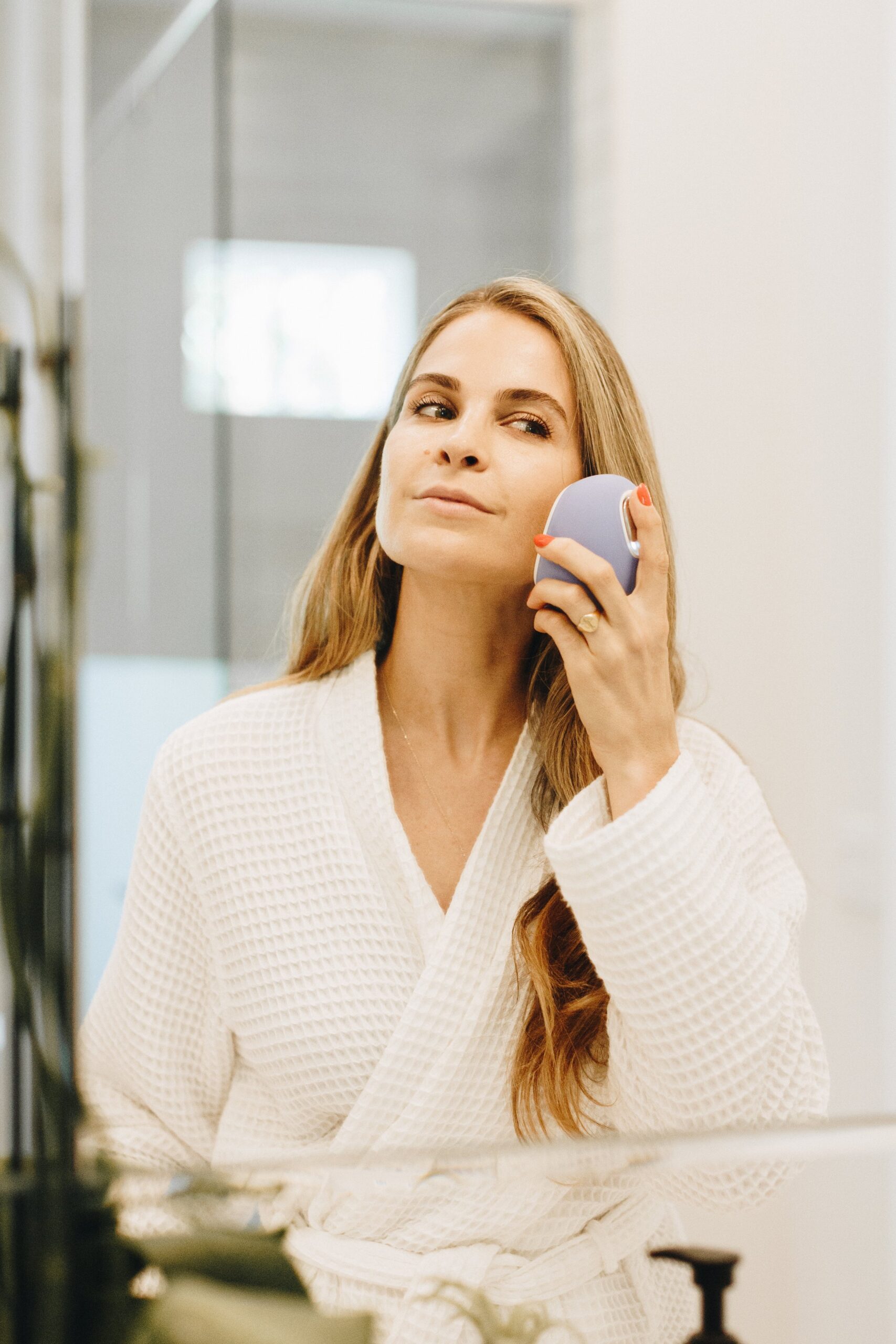
Tranexamic acid isn’t a newcomer to the skincare world by a longshot, but chances are you are hearing more about it these days, as word about its spot-fading powers spreads across beauty blogs and podcasts.
I’m excited to be partnering with one of my favorite skincare companies, Droplette, to tell you a little more about what it is, how to work it into your routine, and the benefits you might see if you incorporate it.
Of course, I sought the input of an expert as well, so let’s dig into Droplette and tranexamic acid!
Board-certified dermatologist and Chief of Dermatology at Orlando Health, Dr. J. Matthew Knight, is helping to answer some specific questions about this maybe-new-to-you ingredient—breaking down what it is, how to incorporate it into your routine, and the results you can expect to maybe see.
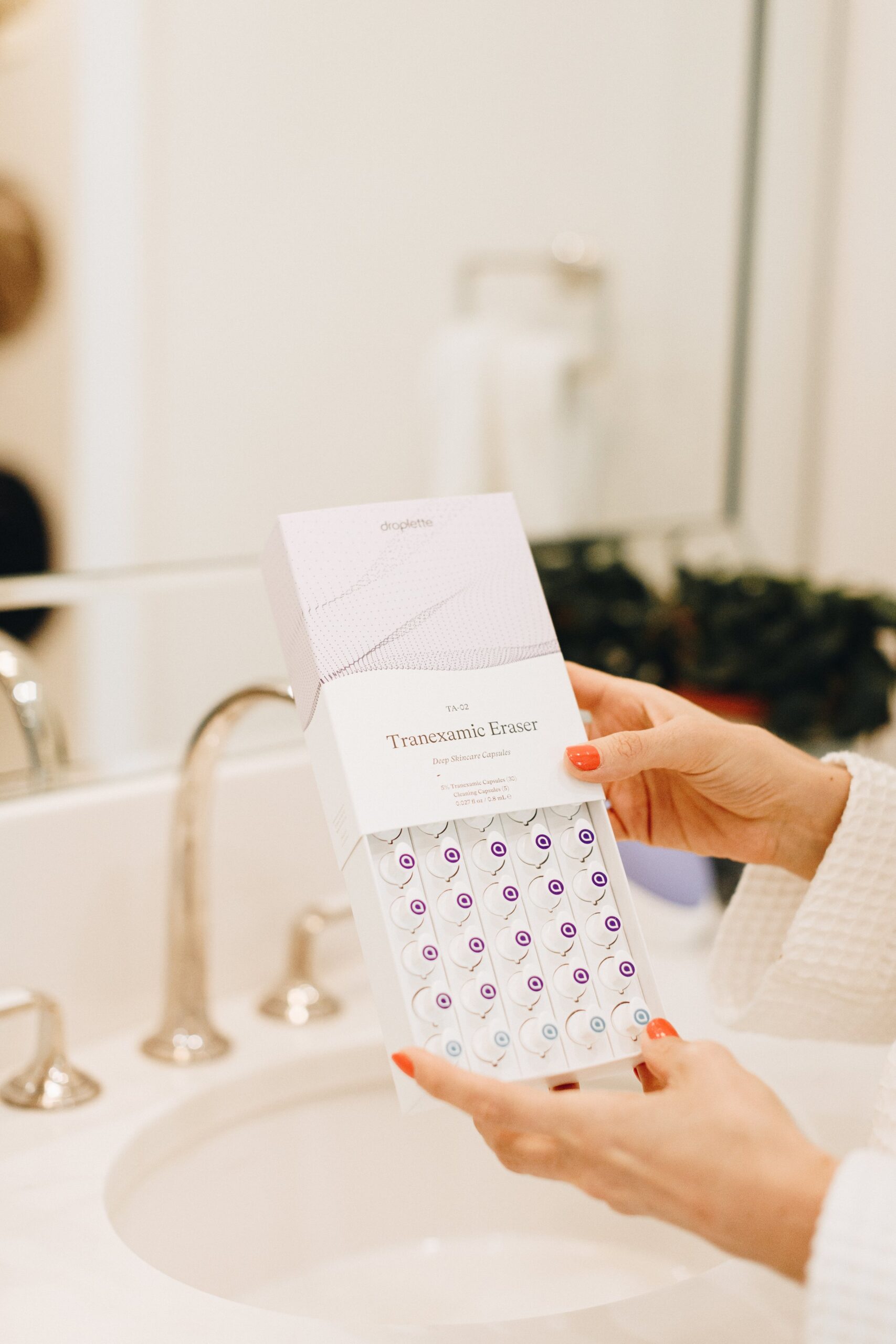
What is tranexamic acid?
Okay, let’s break this down, because tranexamic acid didn’t start off as a skin care ingredient.
When taken orally, tranexamic acid has historically been used to control heavy bleeding, so some women with heavy periods have been prescribed it for that reason. Essentially, it helps the blood to clot.
But topically? That’s a different story.
Doctors began to notice that oral tranexamic acid helped melasma patients, and so now it’s become an ingredient that, when used topically, can inhibit melanin production. That’s a complicated way of saying it can stop spots from forming!
Droplette’s New Tranexamic Eraser
I was so excited to hear that a company I trust and whose products I use got into the tranexamic acid game.
Since hearing about its ability to help inhibit pigmentation, I knew I wanted to find a way to try this ingredient.
Living in Florida, it is impossible to escape the sunshine, and even with religious sunblock application, my face still gets light brown spots from sun exposure that really, really frustrate me.
So I’m starting to use the Tranexamic Eraser capsules, which were just released, and I’ll report back on the results!
Here’s what I can tell you: I trust the science behind Droplette.
Their delivery system breaks down ingredients into micro droplets small enough to penetrate skin—read my honest review and how it works here—and the collagen capsules work, so I can’t wait to see what happens with these darn spots when I start on these!
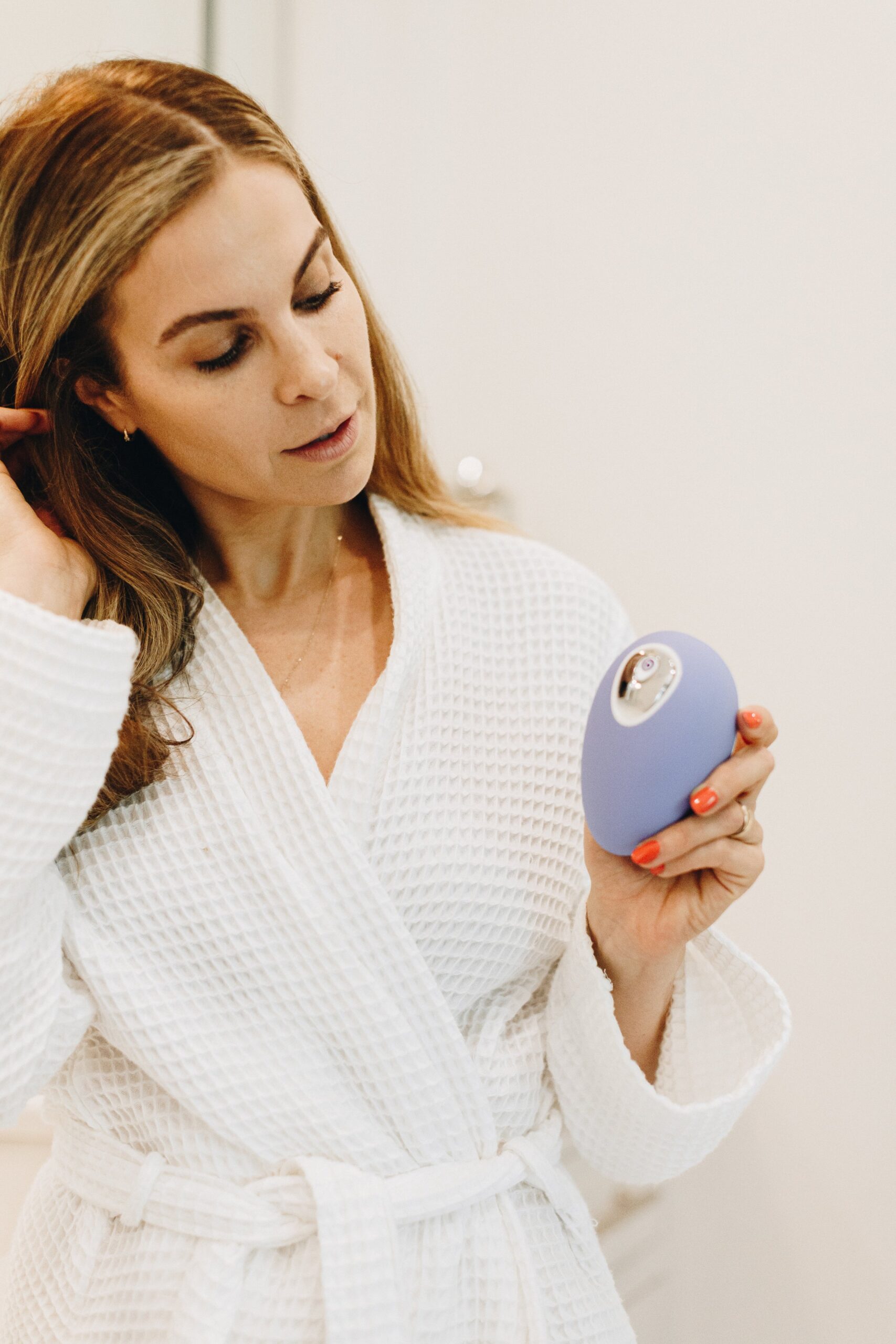
How is tranexamic acid different from other acids commonly found in skincare?
I was curious about this personally, since the word “acid” appears in a ton of skin care products these days, so I wanted to understand a little more about where tranexamic acid fits into the long list of other powerful skin care ingredients.
Dr. Knight weighs in:
“‘Acid’ just refers to [an ingredient’s] pH. Tranexamic acid is not chemically related to Alpha or Beta Hydroxy acids, and the mechanism of action is 100% different. Its mechanism of action is unknown, although we know it down-regulates pigment.”
Translated, this means that tranexamic acid can help get rid of unwanted dark spots on the skin.
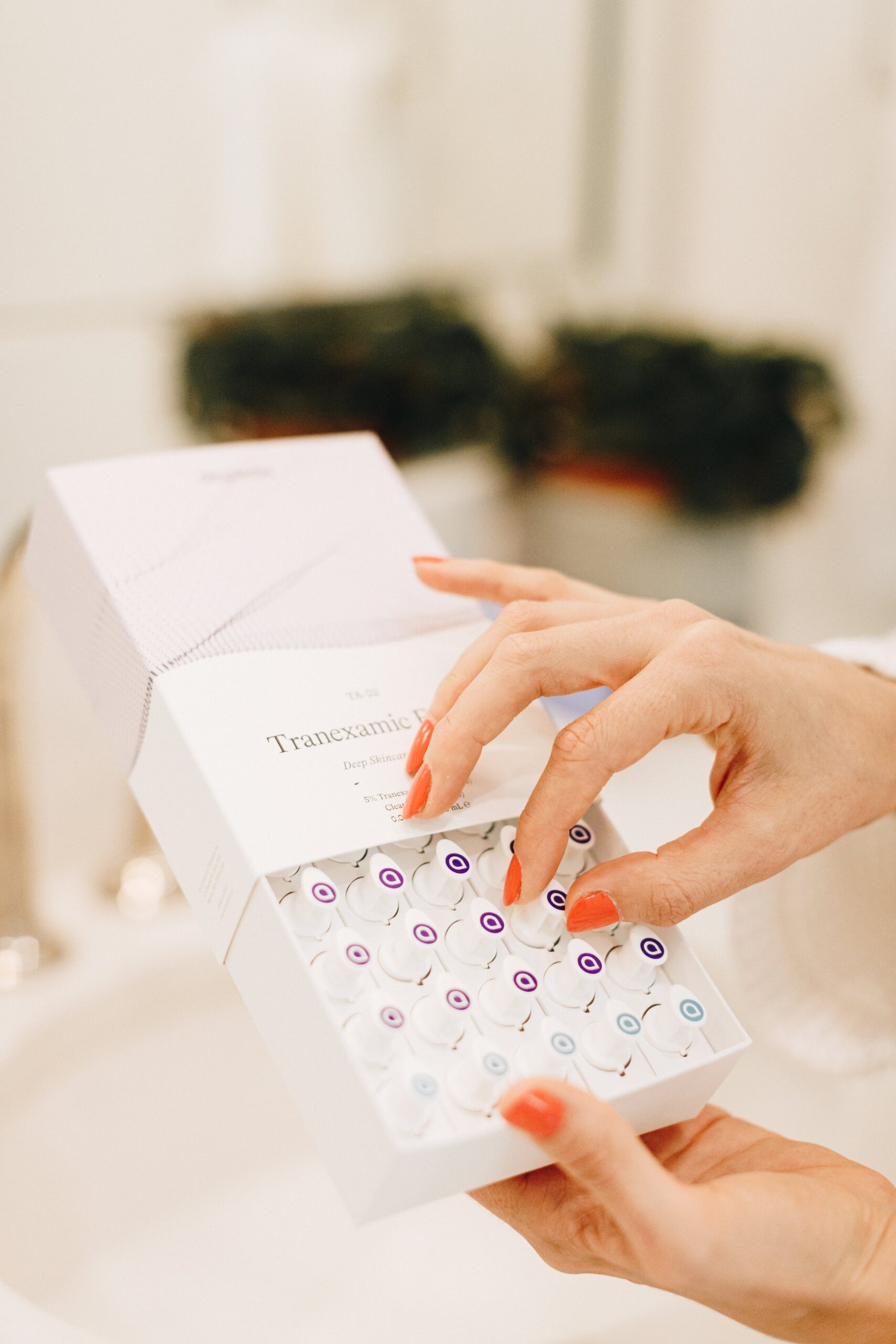
What can you expect when using tranexamic acid topically?
At least right now, the results are promising!
At least one study cited by the National Institutes of Health has shown promise when it comes to treating melasma with TA.
In the study, twenty-three people with melasma applied a 2% tranexamic acid formulation to the whole face for 12 weeks and reportedly saw a lightening of their dark spots.
This of course has prompted skin care companies to focus on this ingredient, and that’s why the founders of Droplette—scientists themselves—have zeroed in on this ingredient as a potential hero for people battling unwanted pigmentation.
And even better, Dr. Knight says it’s a pretty safe bet for people with many skin types.
“It’s pretty safe topically and well-tolerated. … Some docs even say that it helps with skin barrier repair and rosacea.”
Droplette founder Madhavi Gavini adds, “[Tranexamic acid is] full of ingredients that are clinically proven to prevent and treat environmental damage to our skin such as dark spots, redness and uneven skintone that results from UV exposure.
“It’s one of the most common skincare concerns that doesn’t currently have effective over the counter treatment options.”
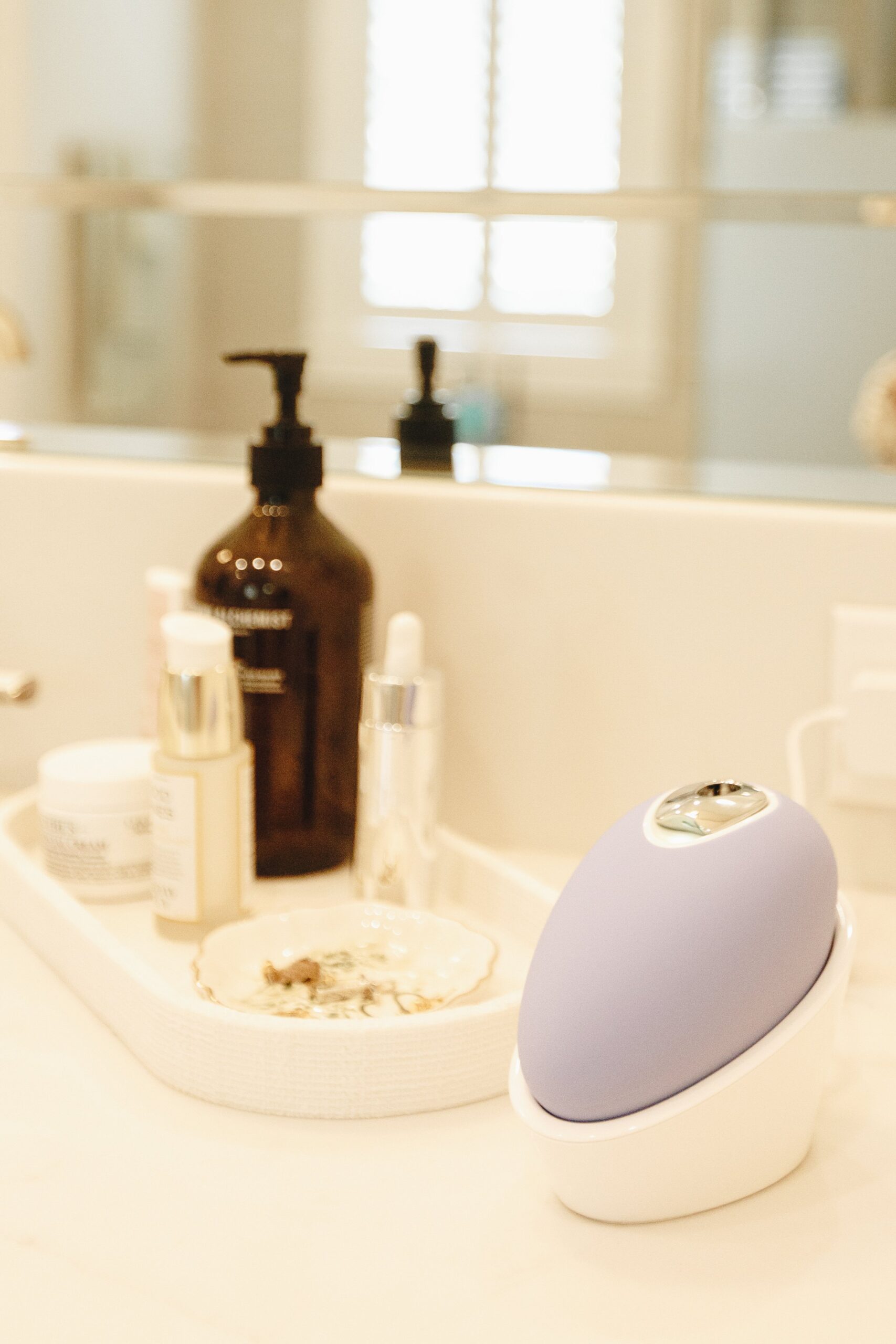
How can you work tranexamic acid into your skin care routine?
What I’m most excited about is that TXA apparently plays really well with other ingredients.
When I asked Dr. Knight if topical tranexamic acid would interfere with other active ingredients I use and love—i.e. retinol—he said there was no reason to worry about using them both.
“You can combine this with Retin-A, niacinamide, Vitamin C and other topical agents at the direction of your derm provider.”
As far as how to introduce it into your routine, Dr. Knight says—as with other new ingredients—start slowly and ask an expert.
“I would introduce slowly, [at] 2 times per week, and work your way up to every other or every night.”
As for how I’m using it? Since I use a retinol product twice weekly, I’m going to slot this in on two other nights, reserving the remaining three days that week for a simple moisturizer.
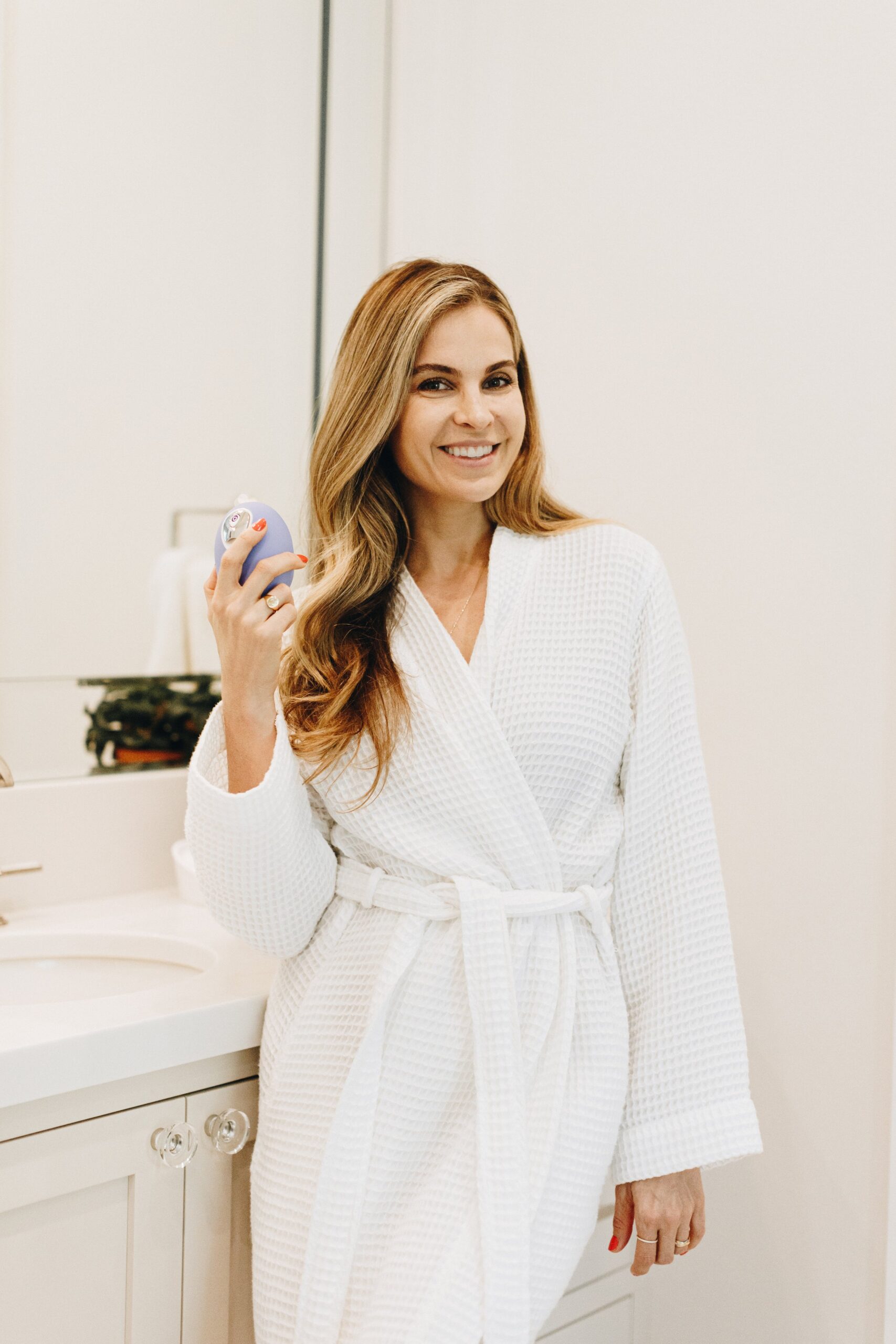
How long will it take to see results with topical tranexamic acid?
As always with skin care routines, results will vary by person, and depending on how well your skin tolerates new ingredients.
But Dr. Knight was quick to add, you need to use sunscreen while you’re using this ingredient! He’s a fan in particular of sunblocks with zinc oxide as the active ingredient.
“I can’t stress this enough: If you’re not blocking the UVA, nothing in the world is going to work [to keep pigmentation away].”
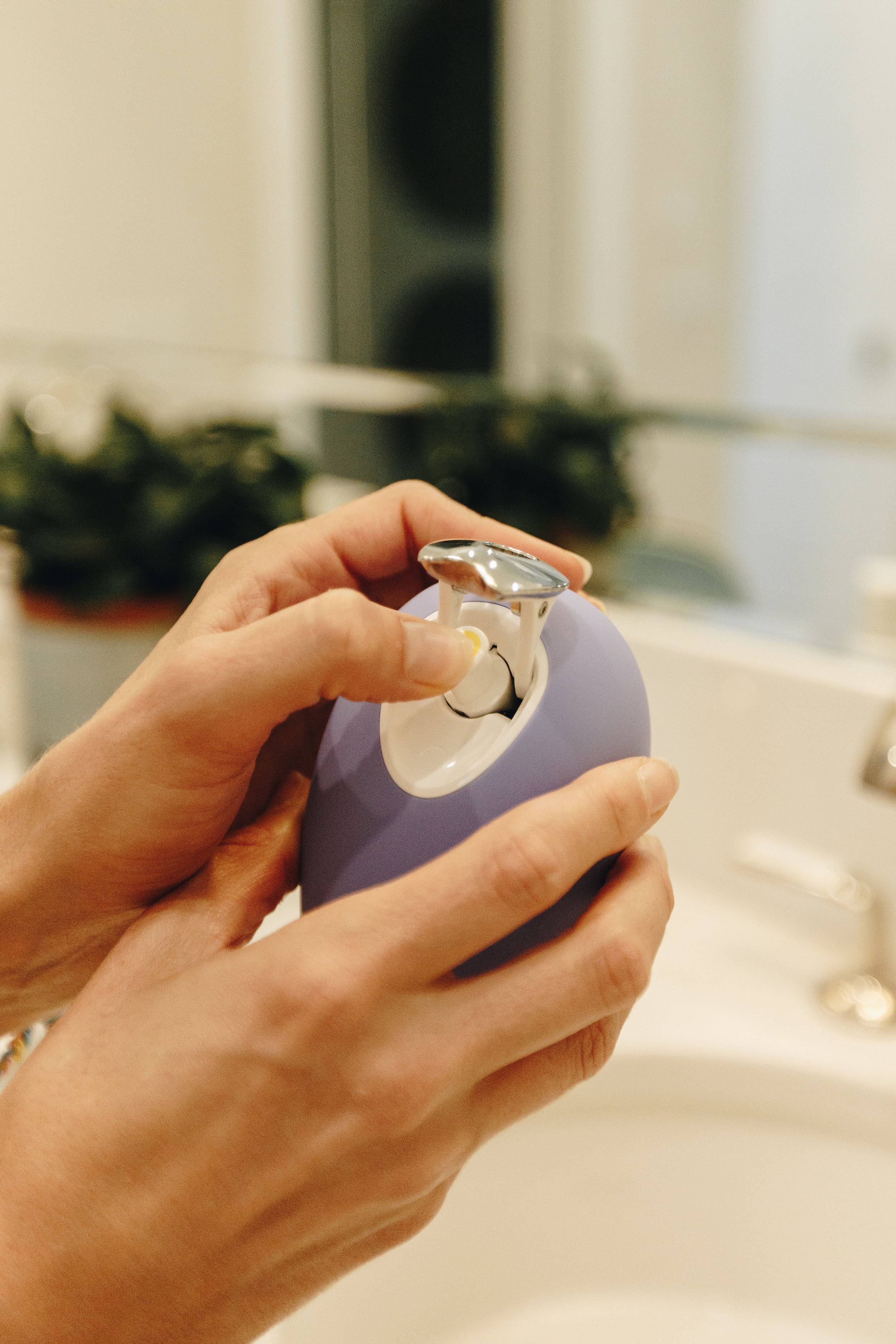
How to Try Droplette at a Discount: Droplette Coupon Code
You all know I only share what I’ve used and actually loved, so I’m so excited to share a discount code you can use to get an amazing deal!
Oh, and by the way, I’m also a huge fan of Droplette’s collagen capsules—which I find plump my skin immediately and leave me with just a glow.
Use code WEGOTTATALK for 20% off your device purchase on their site.
© 2022 WGT Designed by leche studio
PRIVACY & TERMS
CONNECT
NAVIGATE
Home
Blog
Work With Me
More From Us
Want to be the first to get the latest updates and news?
About
Podcast
Contact